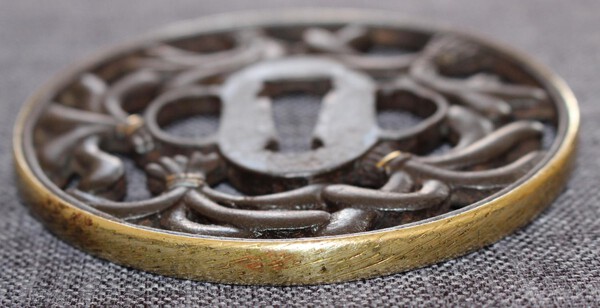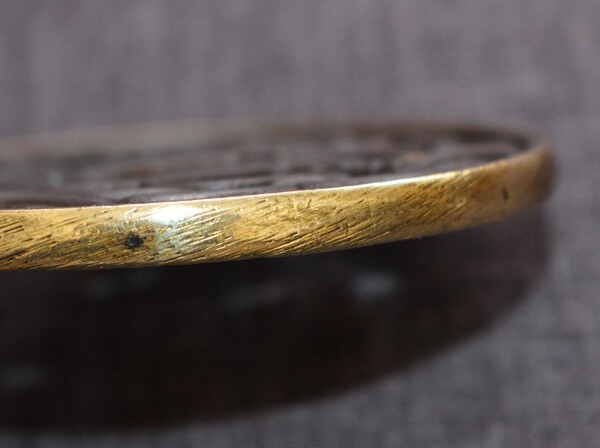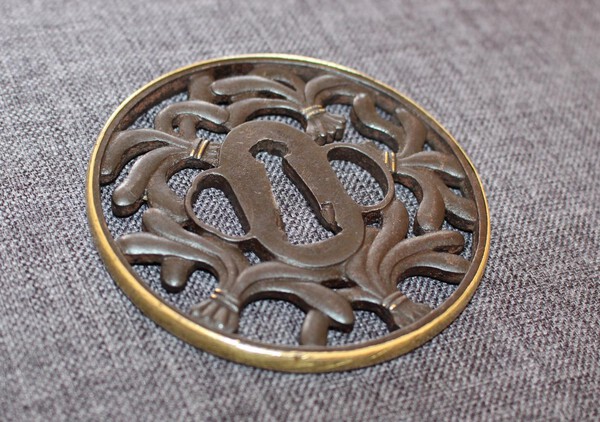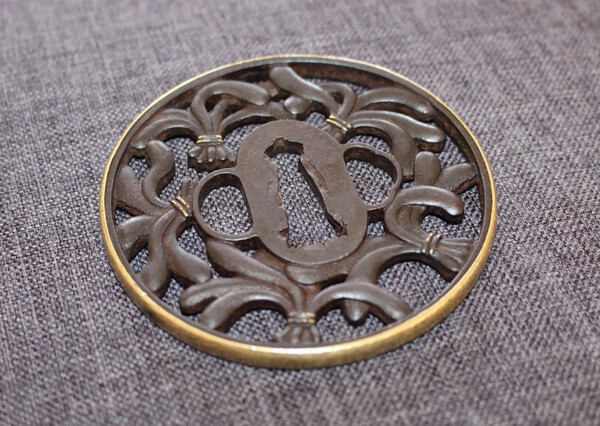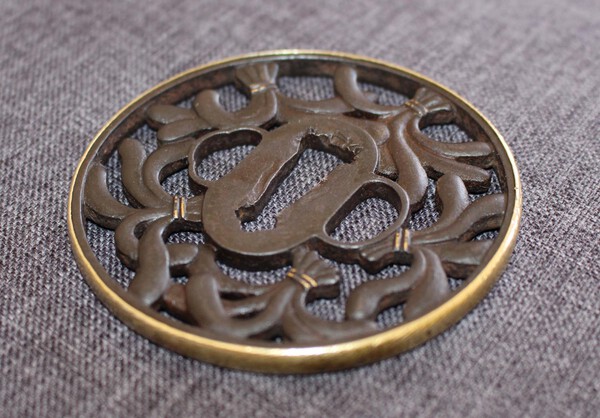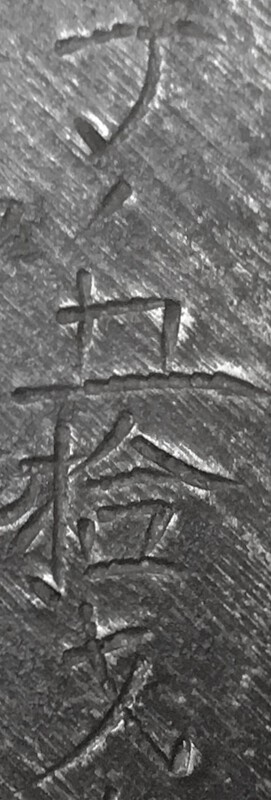
Higo-san
Members-
Posts
707 -
Joined
Content Type
Profiles
Forums
Events
Store
Downloads
Gallery
Everything posted by Higo-san
-
Thank you for the time, Piers!!! I have also come to the conlusion that we are actually looking for at least two Kanji. The last is indeed Hachi. All the best, Chris
-
Inscription On A Late Edo Period Kesa
Higo-san replied to Higo-san's topic in Translation Assistance
Many thanks Steve and John for the information - that is very helpful! I thought the second line read 大和 which is an old spelling for Yamato. But I think you are right that this actually reads 大和寺現住 meaning „who lived at Daisen-ji“. -
Dear all, I would be very grateful for some translation assistance. I have already figured out some parts of the text: 十一月日 = A day in November 嘉永元歳 = First year of Kaei (=1848) 戌(Inu)申(Saru) = 1848 奇進人 = Kishinhito (perhaps a name?) The second picture is more tricky: 惠? 大和寺現住 = Yamato (a temple?) Ju 佐(藤原)三? = Son of ? ?作 = Made this Many thanks, Chris
-
Dear all, can someone read the single Kanji name on the left side? The right side reads „Bushu Ju“. Additional reference for this artist would also be appreciated. Best, Chris
-
Very interesting indeed! Thank you again, George!
-
Dear George, that was an amazing research work!!! Thank you so much for your assistance! I will also Google and try to find out more about this story. All the best, Chris
-
Thanks Arnold - I like your interpretation. A horizontal (falling leaves) and a vertical (moving paddle) movement make sense - like the movements of stars and planets as seen from earth. But I somehow believe this to be a very „Western“ interpretation of the subject. I was wondering whether or not there is a Japanese legend/saying/play which contains all elements seen on the tsuba. Best, Chris
-
Hi Arnold, you have to take several points into consideration: - the dimensions (I did not give away these in my first post because they are rather irrelevant for interpreting the subject) are 7.8 cm x 0.5 cm; you will find these dimensions on many Ko Shoami tsuba; - the rather elongated shape of the hitsu and in particular the shape of the kogai-ana; - the treatment of the surface (difficult to see on pictures); - the color and quality of the iron (even more difficult to see on pictures); - the shape of the rim: kaku mimi; - the piece is mumei; and last but not least: the design which brings us back to my original request ... Best, Chris
-
Dear all, I own a Muromachi/Momoyama-period Ko-Shoami tsuba with design of one paddle (kai), one oak leaf (shirakashi) and four stars/dots - does this ring a bell with someone? Would be interesting to hear an interpretation of this rather uncommon subject/combination of objects. Thanks and kind regards, Chris
-
SOLD
-
Congratulations to the SELLER!!!
-
Thank you both, Greg and Brian! Tsuba is still available (?!) - unfortunately, there will be no discount on this piece. Best, Chris
-
Thanks, Brian !
-
Dear fellow NMB members, I would like to pass one of my best tsuba – a beautiful Kyo Shoami sukashi tsuba dating back to the Momoyama/early Edo period. This tsuba is large and thick and is a very collectible piece by itself but would look great mounted e.g. on a Tensho koshirae, too. The design is five bundles each consisting of five pieces (this numerical game is rather typical for early Shoami pieces). The design may represent noshi which symbolize wishes for a long life. The tsuba is protected by a golden fukurin. Dimensions: 8.2 cm x 8.2 cm x 0.6 cm Asking price: a VERY modest SOLD Best, Chris
-
Dear Sergei, I believe that these could also be bonji characters. Anyway, this is definitely not a signature as these letters seem to have been added a long time after the piece was made. Regarding age: I would say no earlier than mid-Edo period. Best, Chris
-
-
I think we are safe regarding the translation „goji sai saku kore“ (五拾才作之) - made at the age of fifty. My best guess regarding the „丁ノ“ part of the inscription would be that this gives us an indication as to the exact year that person was fifty years old.
-
Doing some further research on the first two(?) kanji (see picture below), I accidentally found an old reference source explaining that the old writing for „sai“ is 才. That means that Ray may have hit the correct nail. Regarding the first (two?) kanji, this may be a reference to the so called heavenly stems.
-
Got it now - thanks, John!
-
Thank you very much for your assistance, John and Peter and Ray (who also gets a partial credit )! Just one thing: I can see the gō for five but I cannot see the fifty.
-
Thank you Ian, My best guess was 丁五拾戈 or ーノ五拾戈 - however, that does not make any sense... this could either be a name or some phrase emphasizing the nice season or the good quality of the work. Best, Chris
-
Dear all, I am trying to figure out part of an inscription on a sword that currently resides at an auction house. Maybe someone can help? There comes a Saku Kore afterwards. Many thanks, Chris
-
I am with Grey here - the first one appears to be a nice late Edo / Meiji period tsuba. The material is strange, however - could be silver or maybe it has lost its original patination. It is signed „道暁作“ meaning Michi(?aka?tsuki?) Saku. The signature looks to be engraved and - from what I can see from the pictures - the dragon fish is also quite nice - just take a closer look at its eye. Best, Chris
-
Regarding the subject: This design is nowadays in Japan commonly regarded as the lacing of an armour (and not butterflies). Best, Chris
-
There you go, Steven. Unfortunately, it is almost impossible to get a good shot of the nanako... I bought this one from Dale a couple of years ago and I am still very happy with it (you can see the other side on Dale's picture: http://www.militaria.co.za/nmb/topic/13286-the-fuchikashira-orphanage/). Best, Chris













